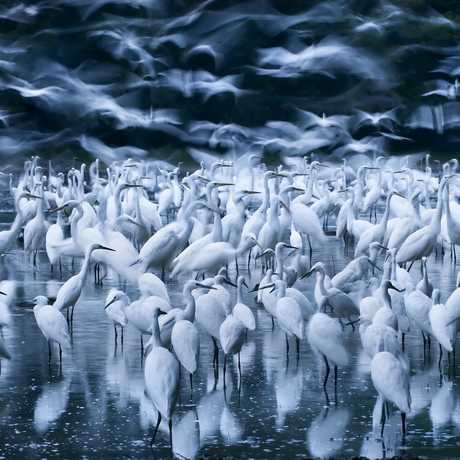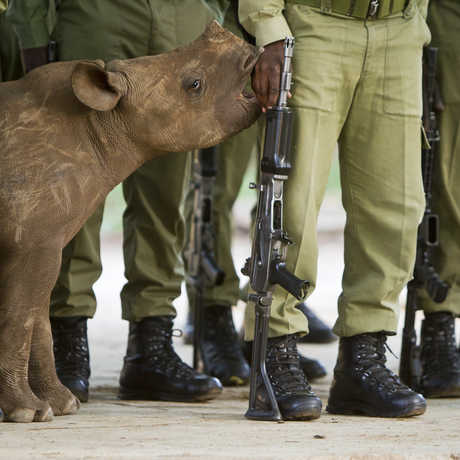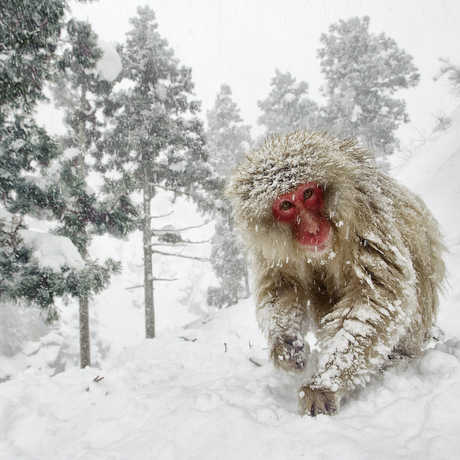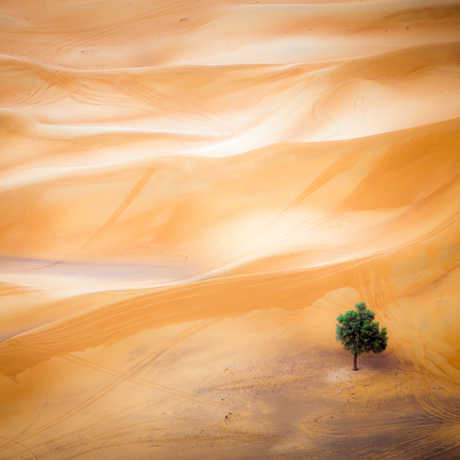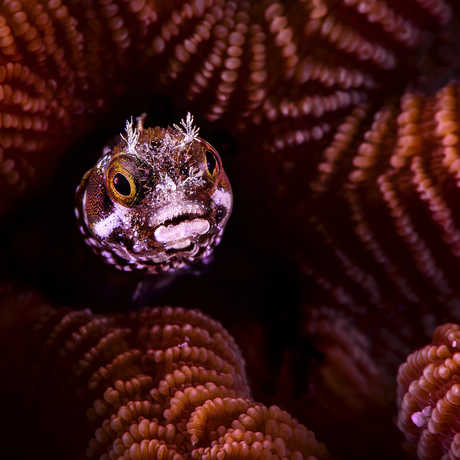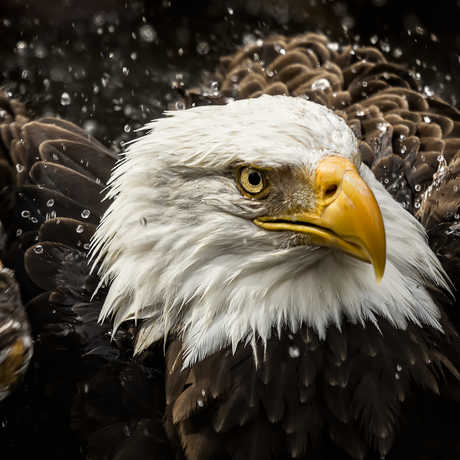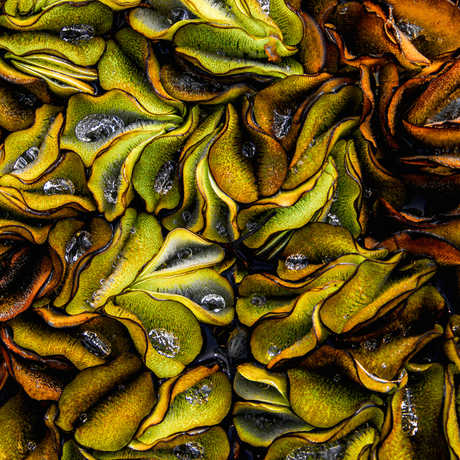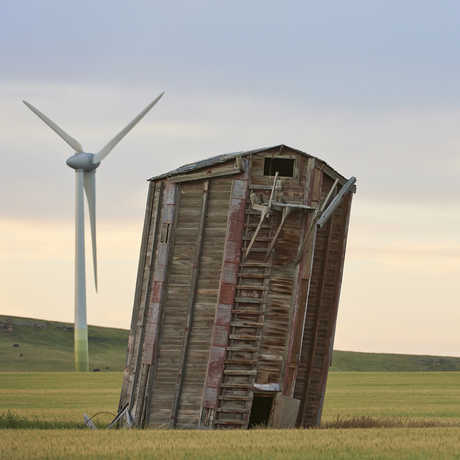"Flying Egrets"
Zsolt Kudich (Budapest, Hungary)
Great egret (Ardea alba)
Gemenc Forest, Danube-Drava National Park, Hungary
More than 1,000 great egrets find sanctuary on a dry lake bed temporarily flooded by the Danube’s overflows. This elegant species has dramatically recovered since the late 19th century, when hunters killed the birds for their showy and fashionable breeding feathers. A hunting ban and other protections, such as the preserve at Gemenc, helped. A slow shutter speed and large depth of field captured this dawn spectacle. “The egrets aloft resemble foamy clouds, while those standing on the ground motionless have sharp silhouettes.”
Kudich’s passion is creating images that capture nature’s fragile balance in an artistically powerful way. His work has garnered attention and accolades in many magazines, books, and photography contests. His latest project took him to eight countries to explore a string of reserves along the Danube River—the basin’s last surviving untouched floodplains.
